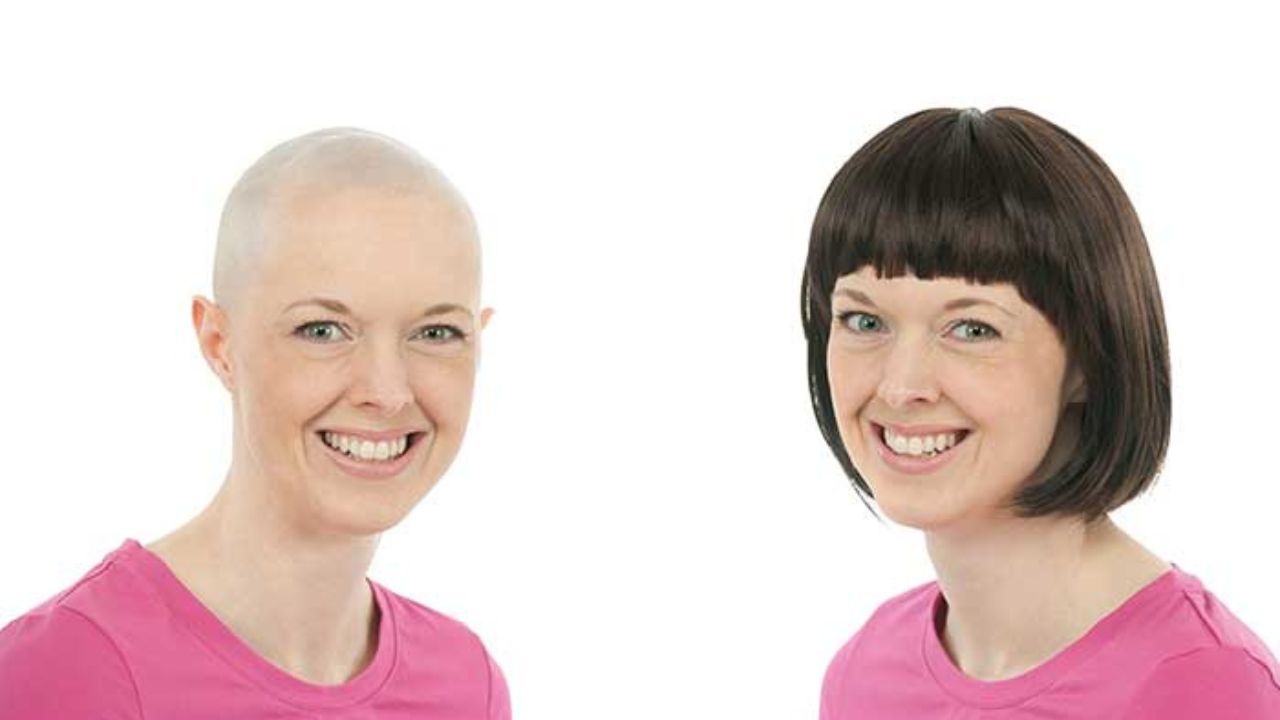Health
Tips and Strategies for Regaining Hair after Cancer Treatment

Cancer treatment can have a profound impact on a person’s life, including physical and emotional changes. One of the common side effects of cancer treatment is hair loss, which can be distressing and can affect a person’s self-esteem and confidence. In this article, we’ll explore tips and strategies for regaining hair after cancer treatment. Whether you’re facing temporary or permanent hair loss, we hope to offer hope and practical advice for a healthier, happier life.
Table of Contents
Why Hair Loss After Cancer Treatment
Hair loss after cancer treatment is a common side effect that can occur due to chemotherapy, radiation therapy, or hormonal therapy. The type of hair loss that occurs depends on the type of treatment received and the duration of the treatment.
Temporary hair loss is a common side effect of chemotherapy and usually begins within a few weeks of starting treatment. The hair typically grows back within a few months after treatment has ended.
Permanent hair loss can occur as a result of radiation therapy and is more likely to happen if the radiation is delivered to the head or neck. In this case, hair may not grow back in the treated area.
It’s important to understand that hair loss after cancer treatment is not a reflection of a person’s health or strength, but rather a side effect of the treatment. By taking steps to promote hair growth and maintain a healthy scalp, it’s possible to regain hair after cancer treatment.
Taking care of your scalp
Taking care of your scalp is an important step in regaining hair after cancer treatment. A healthy scalp is essential for hair growth, and there are several steps you can take to keep your scalp in good condition.
- Use gentle shampoos: Avoid using shampoos that contain harsh chemicals, such as sulfates, that can strip the scalp of its natural oils. Instead, look for gentle, sulfate-free shampoos that will cleanse your scalp without causing irritation.
- Massage your scalp: Regular scalp massage can improve blood flow to the hair follicles and promote hair growth. Use your fingertips to gently massage your scalp for a few minutes each day.
- Avoid harsh chemicals: Exposure to harsh chemicals, such as dyes and relaxers, can damage your scalp and hair. If you must use these products, be sure to follow the instructions carefully and avoid overuse.
- Protect your scalp from the sun: Sun exposure can damage your scalp and hair, leading to hair loss. Wear a hat or scarf when spending time outdoors, and consider using a scalp sunscreen to protect your scalp from harmful UV rays.
By taking these steps, you can help maintain a healthy scalp and promote hair growth after cancer treatment. Remember, it’s important to be patient and consistent in your efforts, as regaining hair can take time.
Nutritional support
Proper nutrition is essential for promoting hair growth after cancer treatment. Eating a balanced diet that is rich in vitamins and minerals can help support hair health and encourage new hair growth.
- Biotin: Biotin is a B-vitamin that plays a crucial role in hair growth. Foods rich in biotin include eggs, almonds, and avocados.
- Iron: Iron is important for promoting healthy hair growth, as it helps carry oxygen to the hair follicles. Foods high in iron include red meat, poultry, and leafy green vegetables.
- Vitamin C: Vitamin C is important for the production of collagen, which is essential for healthy hair growth. Foods high in vitamin C include citrus fruits, berries, and bell peppers.
- Omega-3 fatty acids: Omega-3 fatty acids play a role in maintaining hair health by reducing inflammation and promoting healthy hair growth. Foods high in omega-3 fatty acids include salmon, flaxseed, and chia seeds.
- Vitamin D: Vitamin D is essential for hair growth and can be obtained through exposure to sunlight, as well as through foods such as fatty fish and mushrooms.
By including these vitamins and minerals in your diet, you can help support healthy hair growth after cancer treatment. It’s also important to stay hydrated by drinking plenty of water, as dehydration can contribute to hair loss.
Medical treatments
In addition to lifestyle changes, there are several medical treatments that can help promote hair growth after cancer treatment. Here are some options to consider:
- Topical Minoxidil: Minoxidil is a topical medication that has been shown to be effective in promoting hair growth. It’s applied directly to the scalp and can be used by both men and women.
- Platelet-rich plasma (PRP) therapy: PRP therapy involves injecting a person’s own blood plasma back into the scalp to promote hair growth. The plasma contains growth factors that can stimulate hair follicles and encourage new hair growth.
- Hair transplant surgery: Hair transplant surgery is a procedure in which hair follicles are transplanted from one part of the scalp to another. This procedure can be an effective solution for people with permanent hair loss after cancer treatment.
- Low-level laser therapy (LLLT): LLLT involves using low-level lasers to stimulate hair growth. The therapy is non-invasive and has been shown to be effective in promoting hair growth in some people.
It’s important to note that not all medical treatments for hair loss after cancer treatment are appropriate for everyone, and the best option for you will depend on the cause and extent of your hair loss. Be sure to talk to your doctor to determine the best approach for your individual needs.
Lifestyle changes
In addition to medical treatments, there are several lifestyle changes you can make to promote hair growth after cancer treatment. Here are a few tips to consider:
- Manage stress: Stress can contribute to hair loss, so it’s important to manage stress levels to promote healthy hair growth. Consider practicing relaxation techniques such as yoga, meditation, or deep breathing.
- Get enough sleep: Getting adequate sleep is important for overall health, including hair health. Aim to get 7-9 hours of sleep each night to promote hair growth.
- Exercise regularly: Regular exercise can improve blood flow to the scalp and promote healthy hair growth. Aim to get at least 30 minutes of moderate exercise, such as brisk walking, most days of the week.
- Avoid tight hairstyles: Tight hairstyles, such as braids or buns, can put tension on the hair and lead to hair loss. Avoid tight hairstyles or limit the frequency with which you wear them.
- Limit heat styling: Heat styling, such as blow-drying or flat ironing, can damage the hair and lead to hair loss. If you must use heat styling tools, be sure to use a heat protectant and limit the frequency with which you use them.
By making these lifestyle changes, you can help promote hair growth and regain hair after cancer treatment. Remember, it’s important to be patient, as regaining hair can take time.
Conclusion
Hair loss after cancer treatment is a common concern, but there are several steps you can take to promote hair growth. This includes taking care of your scalp, eating a well-balanced diet that is rich in vitamins and minerals, considering medical treatments, and making lifestyle changes.
Remember, hair growth after cancer treatment can take time and patience. It’s important to work with your doctor to determine the best approach for your individual needs. With the right support, you can regain your hair and feel confident and beautiful again.

-

 Entertainment News1 year ago
Entertainment News1 year agoAvatar: The Way of Water (2022) » Download Full Movie 1080p Leaked by YoMovies
-

 Entertainment News1 year ago
Entertainment News1 year agoHead Over Bills (2022) – Download Full 1080p Nollywood Movie
-

 Entertainment News1 year ago
Entertainment News1 year agoDeleter (2022) » Download Full Movie 1080p Leaked
-

 Entertainment News1 year ago
Entertainment News1 year agoSpider-Man: Across the Spider-Verse (2023) » Download Full Movie 1080p Leaked by YoMovies
-

 Entertainment News1 year ago
Entertainment News1 year agoBlack Adam (2022) » Download Full Movie 1080p Leaked by YoMovies
-

 Entertainment News1 year ago
Entertainment News1 year agoBarbie (2023) » Download Full Movie 1080p Leaked by YoMovies
-

 Entertainment News1 year ago
Entertainment News1 year agoAquaman and the Lost Kingdom (2023) » Download Full Movie 1080p Leaked by YoMovies
-

 Sports1 year ago
Sports1 year agoHow to Analyze Past Performance Data in Horse Racing
